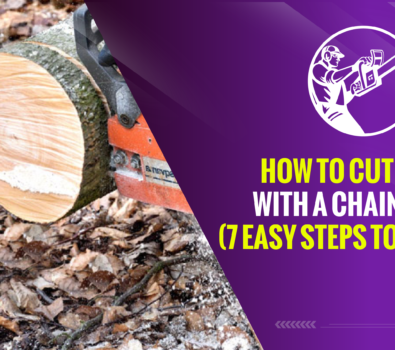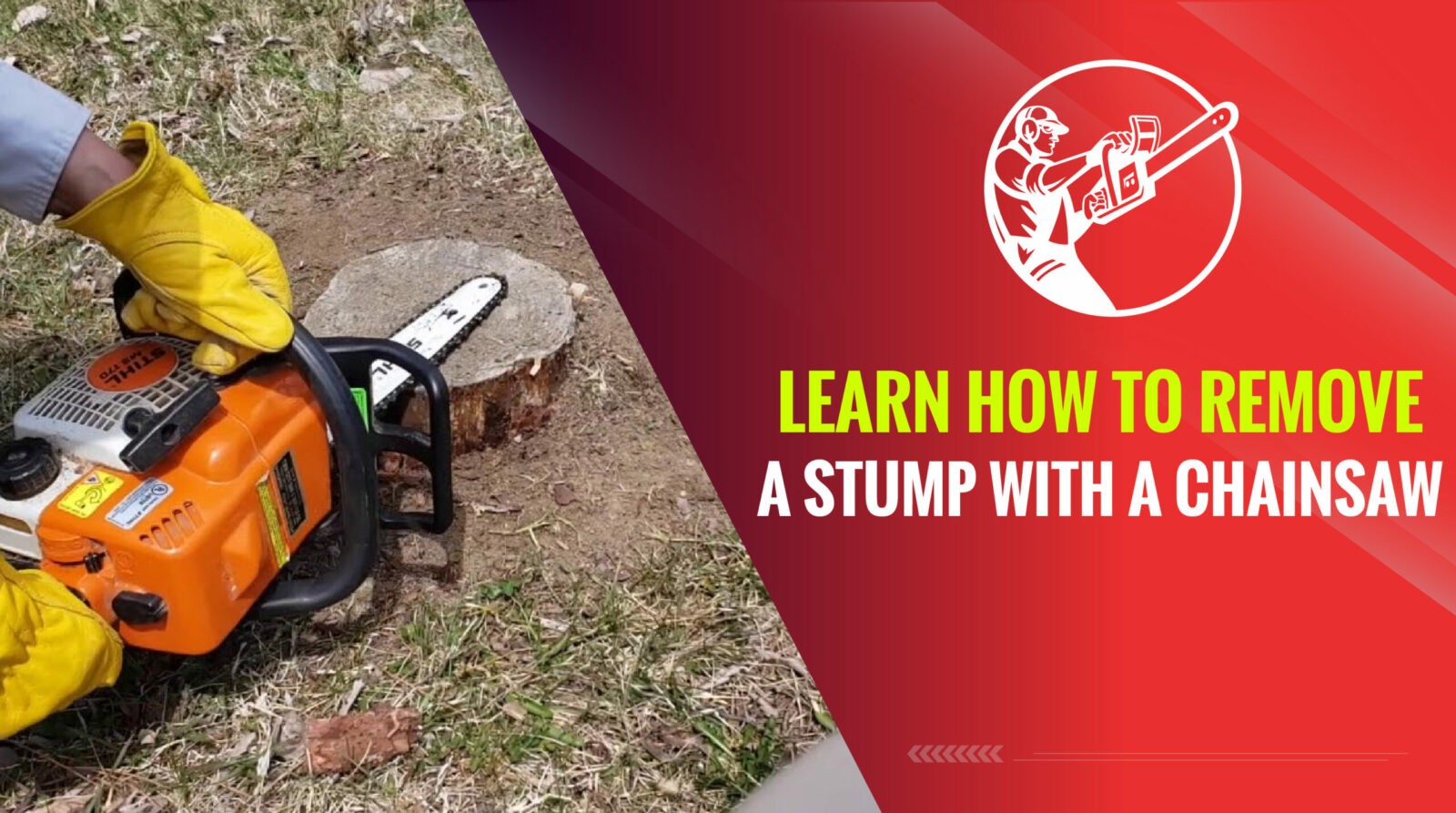Replacing a chainsaw chain might require different techniques depending on the brand and model you’re using. However, the basic procedure remains the same.
Here’s the correct way to put on a chainsaw chain. You’ll first need to take off the old chain and for that, remove the sidebar panel and then release the chain tension. Now loosen the tightening screws located on the inside of the guide bar and the chain will come off. Now put on the new chain, adjust the guide bar and sidebar panel, tighten everything back and you’re done!
Putting a chain on a chainsaw is no big deal. It hardly requires 10 to 15 minutes if you do it with a complete focus. But make sure you install it correctly because an incorrectly installed chain could be even more dangerous than an old chain on your chainsaw!
This article further contains step-by-step procedures to replace a chainsaw chain, important things to consider while doing so, and answers from our personal experience to some frequently asked questions by our readers.
Do You Really Need to Replace Your Chainsaw Chain?
Yes. But not too often. Chainsaw chains should only be replaced when they’ve become dull and old, as a dull chain on your chainsaw would greatly decrease the efficiency and power of your saw. Also, because chainsaws operate at extremely high speeds and cut super sharp, an issue with your chain may risk the safety of the operation as well as the user and may result in serious injuries.
Hence, it’s extremely important to keep a good check on the condition of your chainsaw’s chain and replace it whenever needed.
Steps For How To Replace A Chainsaw Chain
While the basic procedure of replacing a chainsaw chain is the same as mentioned above, here’s a step-by-step explanation of how to change a chainsaw chain.
First of all, make sure you have the following tools right by your side as you begin.
- T-wrench/Socket Wrench
- Flathead screwdriver
Follow these steps:

1: Remove the Side Plate on Your Saw
There are usually two nuts holding the chainsaw side plate on. Remove the plate by unscrewing the nuts with a socket wrench.
Before removing the chainsaw’s sprocket, unlock the chain saw’s brake if it is attached to the side plate. If you remove the side plate with the brake locked, reinstalling it may be difficult or impossible.
2: Release the Bar from the Chain Tensioner
With the sprocket plate off the saw, it is time to remove the old chain. But before that, you’ll have to disconnect the chainsaw’s bar from the tensioner by pulling it away from the chainsaw.
3: Remove the Old Chain
Now that the chain tensioner has been released, you can easily pull the old chain. Slide the other end of the chain around the clutch drum after pulling the drive links out of the guide bar.
4: Loosen the Tightening Screws
The next step is to loosen the tightening screws. These screws are located on the inside of the guide bar. You might be wondering why a need is there to loosen the screws now when the chain has been removed. But it is important because loosening the screws would make it easy to slide on the new chain.
So, locate the screws and loosen them.
5: Put on the New Chain
Now, replace the chain by threading the new chain around the clutch drum, ensuring the drive links are engaged.

6: Align Back the Guide Bar
Now you’ll have to align back the guide bar that you released in step 2. Having threaded the chain through the clutch drum and guide bar, place some tension on it by pulling on the guide bar’s nose as you pull away from the chainsaw. Make sure you seat the guide bar onto the saw’s adjustment pin when pulling it.
7: Put Back the Side Plate
Once the guide bar is properly positioned beneath the side plate, the side plate can be put back on.
The plate should be replaced and the nuts that hold it in place should be tightened up to about halfway, but not all the way yet. During the tensioning process, it is important to allow the guide bar a little freedom of movement.
8: Tighten Things Back
Now is the time to finally tighten things back up. Add tension to the chainsaw chain by using the tensioning screw. You can completely tighten the nuts (that you let a little loose in step 7) once you’ve reached the correct tension.
Here’s a video you may watch.
Things to Consider When Replacing the Chainsaw Chain
The very first thing to consider when replacing your chainsaw’s chain is to know whether or not the chain needs to be replaced. Because if there isn’t a need to do so, you simply don’t have to. In other words, even if your chain is old but it works perfectly fine, you don’t have to replace it just because it’s old. Keep going until you feel a need to change it.
Also, do make sure you’ve selected the exact sized chain that’s compatible with your saw. Try getting a chain from the same brand as your chainsaw.
Replacement chains must fit the guide bar. Remember, not all chains are compatible with all bars. The chain length must be appropriate in order for the chain to function properly without any risks to your safety. So, choose the replacement chain wisely.
How To Replace a Chainsaw Chain – FAQs
Conclusion
You must use a good chainsaw chain if you want to get the best cutting results. Although the motor of the saw is an important component in driving the cutter, it is the chain that actually cuts. Chainsaw chains dull, corrode and may break over time. As a result, you must replace them to avoid severe injuries.
If you’re considering replacing your chainsaw chain, it’s important to know that you can sharpen it several times before doing so. But when it requires replacement, you’ll have to go for it.




